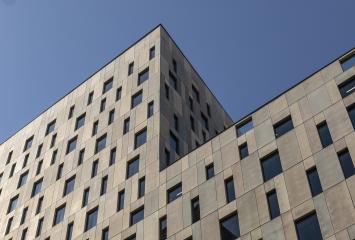The Influence of Office Soundscapes on Human Well-being
Every environment presents a series of associated sounds that, although there may be variations based on certain circumstances, tend to be more or less stable over time. A soundscape, far from being uncontrollable, can be strategically shaped through the use of acoustic landscaping techniques. In some spaces, this control is particularly important, such as in offices, where noise and sounds have a direct effect on the well-being of the occupants and, consequently, on their performance. In this sense, the advantages of providing a pleasant and harmonious soundscape are enormous.
Benefits of a Healthy Soundscape
Whether an environment offers a pleasant soundscape depends on both the intensity and nature of the sounds. The brain tends to become quickly overwhelmed by very high decibel sounds and by harsh or unnatural sounds. On the contrary, a friendly soundscape leads to a reduction in mental stress, which in turn reduces both irritability and fatigue. Additionally, partly due to all the above, it also promotes a higher level of concentration, crucial when performing complex tasks that require a high cognitive load, such as analytical or creative tasks.
On the other hand, environments with healthy soundscapes also encourage communication among different individuals, something crucial for teamwork quality in the office. In this regard, caring for various design aspects that influence the level and category of environmental sound fosters collaboration and increases the overall productivity of the organization. Lastly, we must not overlook the purely emotional component: an office with an exhausting soundscape can decrease work enthusiasm and contribute to employee turnover.
Acoustic Landscaping Strategies for Offices
While science supports each of these claims, it is not difficult to intuit from common sense that a noisy office is much less appealing than an office with a good sonic atmosphere. What is not so straightforward is achieving that atmosphere. At Colonial, for example, and thanks to the intervention of specialists in acoustic design, we managed to provide our assets with such a soundscape through advanced strategies such as the use of acoustic absorption materials like acoustic panels, thick curtains, or suspended ceilings. It is one of the main weapons to combat excess noise in offices.
But the architectural design of the spaces themselves also matters significantly. Understanding the general needs of companies and being strategic in the placement of different rooms is key to minimizing the spread of unwanted noises and achieving rooms with a sound level relevant to the functions to be performed in them. Likewise, the use of technologies, such as ambient sound systems, can also contribute to acoustic rebalancing. Finally, and outside of design, it is essential to implement office behavior policies that result in a friendly soundscape for everyone.

